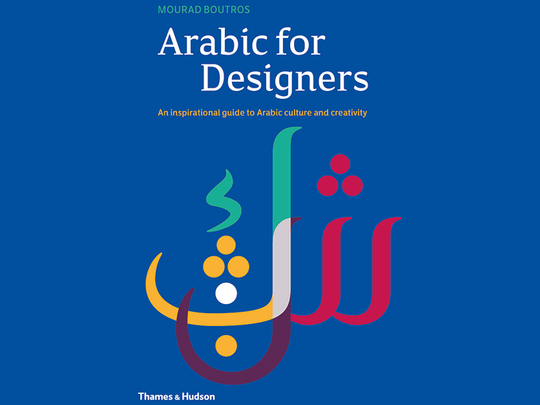
Arabic for Designers
By Mourad Boutros, Thames & Hudson, 223 pages, £82
As an editorial designer living in an Arab country, this seems like the perfect book for me, but really, this book should be of interest to anyone interested in the history of Arabic calligraphy and typography and its development through modern media and communication era.
Extensively illustrated with more than 200 examples, Arabic for Designers begins with the origin of English and Arabic languages, the relationship between classic Arabic writing and Islam and the need for different calligraphic typefaces to increase clarity and ease of reading and how these styles were adopted by newspapers, magazines and the advertising industry.
The next section is an introduction to the elements of typography and features a detailed comparison between Arabic and Latin type — very useful for non-Arab designers. Here, the author also reviews the effect of technology — from transferable characters to desktop publishing — in the development of typefaces. As a designer with many years in the industry, I really enjoyed this section because it brought back many good memories.
Using visual examples and case studies, Boutros takes the reader through the entire range of graphic design applications — newspaper and television news typefaces, book jacket designs, corporate and brand identity, logotype conversions, advertising, design for print and fine art.
From typography, the book moves to logotype design, covering not only the typography aspect but the cultural differences in various countries — in terms of symbolic elements with many examples from all the world which can lead to unfortunate mistakes. Did you know that the owl, a symbol of wisdom in western culture, is associated with death in the Middle East? This section showcases multiple examples of real products that went wrong and led to costly mistakes owing to a lack of awareness about the Arab culture and language.
When working with bilingual logotypes or publications, we learn the relevance of producing typefaces that reflect cultural background and can be used together in a balanced and harmonic way. A selection of successful examples illustrates this interaction.
The book also contains examples from newspapers and television where good use of typography and understanding of the objective of the project was the key to success. These includes companies like Al Arabiya and BBC Arabic and Basic Arabic, a project to develop a typeface that facilitates the process of teaching of Arabic-speaking children and adults to read and write in Arabic.
There is also a section that shows the versatility of designing with Arabic typography for bilingual or Arabic only media and including different industry and service sectors such as finance, food, hospitality, cars and even traffic signals, where creating Latin and Arabic versions of the same typeface was crucial to convey the message. For other projects like ads, posters and jewellery, it is more about understanding and translating the meaning of concepts instead of literal translations.
The last section of Arabic for Designers is dedicated to the integration between Arabic calligraphy and art, sharing beautiful paintings and sculptures.
To conclude, I have to say that this book can make a good read not only for designers or people in the Industry of design and advertising, but for anyone interested in Arabic calligraphy history and visual culture and how the Middle East is interacting with the non-Arabic countries.









